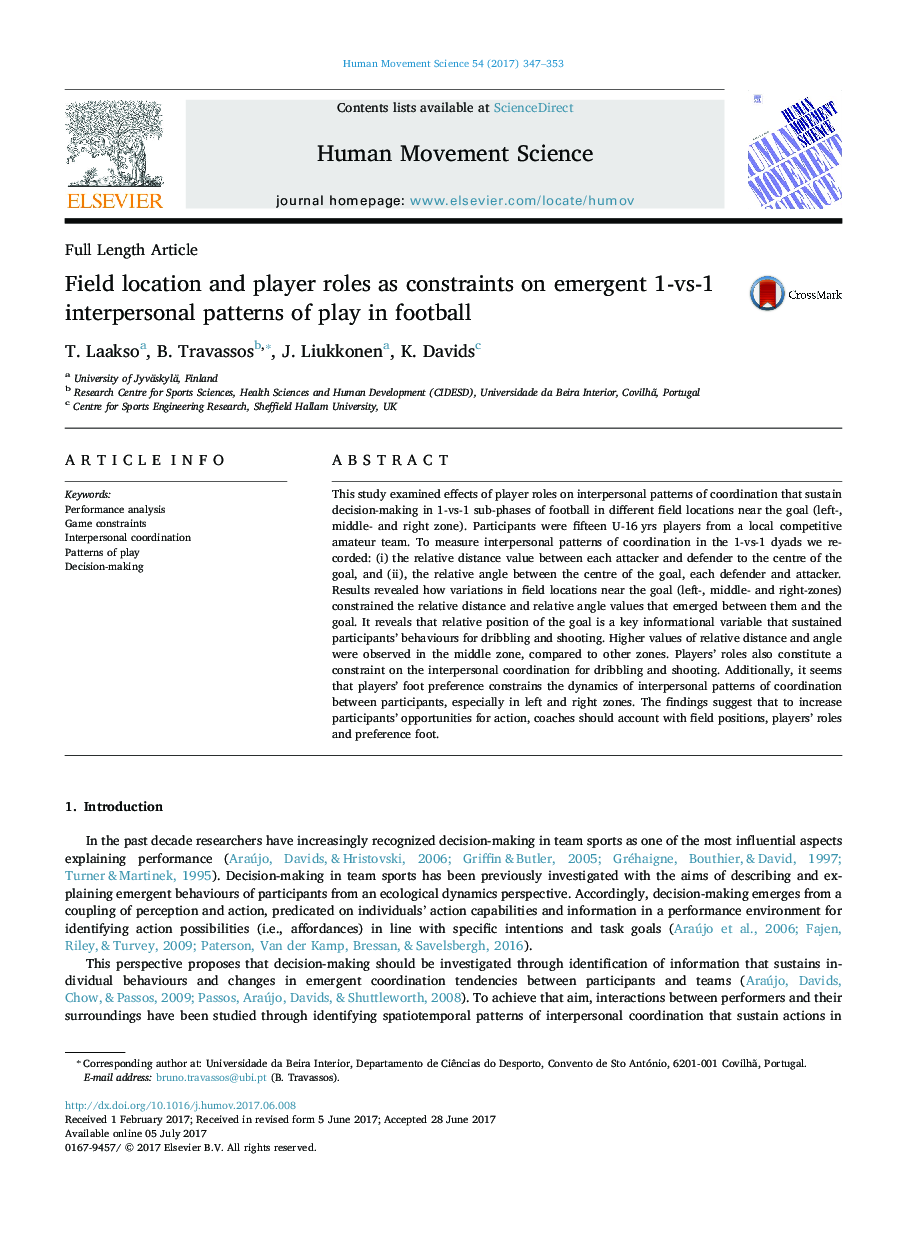| Article ID | Journal | Published Year | Pages | File Type |
|---|---|---|---|---|
| 5041994 | Human Movement Science | 2017 | 7 Pages |
â¢Variations in field locations near the goal constrains 1vs1 patterns of coordination.â¢Relative position of the goal is a key information for dribbling and shooting.â¢Players' roles constrains 1vs1 patterns of coordination.â¢Relative distance and angle to the goal captures changes on 1vs1.â¢Players' foot preference is a constraint on 1vs1 near the goal.
This study examined effects of player roles on interpersonal patterns of coordination that sustain decision-making in 1-vs-1 sub-phases of football in different field locations near the goal (left-, middle- and right zone). Participants were fifteen U-16Â yrs players from a local competitive amateur team. To measure interpersonal patterns of coordination in the 1-vs-1 dyads we recorded: (i) the relative distance value between each attacker and defender to the centre of the goal, and (ii), the relative angle between the centre of the goal, each defender and attacker. Results revealed how variations in field locations near the goal (left-, middle- and right-zones) constrained the relative distance and relative angle values that emerged between them and the goal. It reveals that relative position of the goal is a key informational variable that sustained participants' behaviours for dribbling and shooting. Higher values of relative distance and angle were observed in the middle zone, compared to other zones. Players' roles also constitute a constraint on the interpersonal coordination for dribbling and shooting. Additionally, it seems that players' foot preference constrains the dynamics of interpersonal patterns of coordination between participants, especially in left and right zones. The findings suggest that to increase participants' opportunities for action, coaches should account with field positions, players' roles and preference foot.
